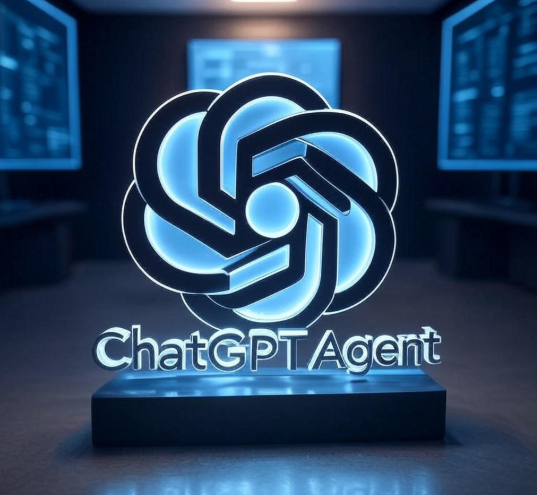In today’s fast-paced world, time is the ultimate currency. Whether you’re a freelancer juggling multiple gigs, a corporate professional navigating endless meetings, or an entrepreneur building the next big thing, staying productive is a constant challenge. Enter artificial intelligence (AI) the game-changing tool that’s transforming how we work. From automating mundane tasks to sparking creative breakthroughs, AI is your ticket to getting more done in less time. Ready to supercharge your workflow? Here are five viral-worthy AI productivity hacks to make you unstoppable in 2025. Buckle up this is your guide to working smarter, not harder.
1. Automate Your Inbox with AI Email Assistants
Your email inbox is a productivity black hole. The average professional spends 28% of their workday—roughly 2.6 hours—managing emails, according to a McKinsey study. That’s time you could spend on high-impact tasks. AI-powered email tools like Superhuman, SaneBox, or even Gmail’s Smart Compose are here to save the day. These tools use machine learning to prioritize important messages, filter out spam, and suggest quick, context-aware replies.
How It Works
AI email assistants analyze your email habits whom you reply to, how quickly, and which messages you ignore. Over time, they learn to sort your inbox into categories like “urgent,” “low priority,” or “newsletters.” Some tools, like Superhuman, even predict when you’re likely to respond and surface those emails at the right moment. Pair this with Grammarly’s AI writing assistant, and you can craft polished, professional responses in seconds.
The Hack
Spend a week training your AI assistant by manually categorizing emails. Mark which ones need immediate attention and which can wait. Once trained, the AI will auto-sort your inbox, saving you hours of scrolling and clicking. For example, SaneBox’s “SaneLater” folder hides non-urgent emails until you’re ready to tackle them. You can also use AI to draft responses. Try a prompt like, “Write a polite decline to a meeting request” with a tool like Grok (that’s me!), and you’ll get a tailored reply instantly.
Pro Tip
Set up filters to auto-archive newsletters or promotional emails. If you’re using Gmail, enable Smart Compose to predict and complete your sentences. This small tweak can cut your email response time by up to 20%, according to Google’s internal studies. Imagine reclaiming an hour a day just by letting AI handle your inbox.
2. Master Your Schedule with AI-Powered Calendars
Scheduling is a nightmare. Between meetings, deadlines, and personal commitments, your calendar can feel like a game of Tetris gone wrong. AI tools like Clockwise, Reclaim.ai, and Motion take the chaos out of scheduling by optimizing your day based on your work habits, priorities, and team availability.
How It Works
These tools sync with your existing calendar (Google, Outlook, etc.) and use AI to analyze your schedule. They identify patterns like when you’re most focused or when meetings tend to pile up and suggest optimizations. For instance, Clockwise can automatically move non-urgent meetings to create uninterrupted “focus time” blocks. Reclaim.ai goes a step further by reserving time for habits like exercise or learning, ensuring you don’t burn out.
The Hack
Sync your AI calendar with a to-do list app like Todoist or Notion. The AI will assign time slots to tasks based on their urgency and your energy levels. For example, if you’re a morning person, it might schedule creative tasks before noon and administrative work later. Studies show poor scheduling costs workers up to 20% of their week AI fixes that by making every hour count.
Pro Tip
Ask your AI tool to reserve “deep work” blocks during your peak productivity hours. If you’re not sure when those are, track your energy levels for a week and let the AI analyze the data. Tools like Motion can even predict when you’re likely to be interrupted and adjust your schedule to protect your focus time.
3. Generate Ideas and Content with AI Brainstorming
Hitting a creative wall? AI tools like Grok, Jasper, or Copy.ai are your brainstorming buddies. Whether you need blog post ideas, marketing copy, or a pitch deck outline, these tools can generate content in seconds. They’re not just for writers marketers, designers, and entrepreneurs can use AI to spark ideas and streamline content creation.
How It Works
AI content tools use natural language processing to generate text based on prompts. Feed them a simple instruction like, “Generate 10 creative headlines for a blog about productivity,” and they’ll deliver a list of attention-grabbing options. You can refine the output by tweaking the prompt for example, “Make it punchy and relatable for Gen Z.” Pair this with Canva’s AI design features, and you can turn your ideas into viral-worthy visuals in minutes.
The Hack
Start with a broad prompt to brainstorm ideas, then narrow it down. For instance, ask Grok, “List 20 productivity tips for remote workers.” Take the best five and use them to create a blog post outline. Then, feed the outline back into the AI to flesh out a draft. This iterative process can cut content creation time by 50% or more, according to user reports on X. For visuals, use Canva’s Magic Studio to generate infographics or social media posts that pop.
Pro Tip
Experiment with tone and style. A prompt like, “Write a motivational LinkedIn post about productivity in the style of Gary Vaynerchuk” can produce content that resonates with your audience. Always review AI outputs to ensure they align with your brand voice AI’s a tool, not a replacement for your creativity.
4. Streamline Research with AI Summarizers
Research is a time sink. Whether you’re prepping for a presentation or staying updated on industry trends, sifting through articles, papers, and X posts can take hours. AI tools like Perplexity, Notion’s AI, or even Grok’s DeepSearch mode (available with a click in the UI) can summarize complex information in seconds.
How It Works
These tools use advanced algorithms to scan documents, websites, or social media and extract key points. For example, Perplexity can summarize a 10-page research paper into a 100-word overview. Grok’s DeepSearch mode goes further by iteratively searching the web and X for real-time insights, ensuring you get the latest information without endless scrolling.
The Hack
Use AI to summarize long-form content or trending discussions. Try a prompt like, “Summarize the latest productivity trends on X.” You’ll get a curated list of insights, complete with references to top posts. This is perfect for staying informed without drowning in information overload. According to a 2024 study, professionals spend 15 hours a week on research AI can cut that in half.
Pro Tip
Cross-check AI summaries with primary sources for accuracy, especially for critical projects. If you’re using Grok, activate DeepSearch mode for real-time data from X or the web. It’s like having a research assistant who never sleeps.
5. Delegate Repetitive Tasks to AI Automation
Repetitive tasks like data entry, file organization, or social media scheduling are productivity killers. AI automation platforms like Zapier, Make (formerly Integromat), or UiPath can connect your apps and automate workflows with zero coding required. Think: auto-saving email attachments to Google Drive, scheduling X posts when you publish a blog, or logging expenses in QuickBooks.
How It Works
These tools use AI to identify repetitive processes and suggest automation “zaps” or workflows. For example, Zapier can detect when you receive an email with a specific keyword (like “invoice”) and automatically save the attachment to a designated folder. A 2023 Gartner report estimates automation can save the average worker 9 hours a week.
The Hack
Set up an AI workflow to track your time. Connect Toggl with Zapier to log hours spent on tasks and generate weekly productivity reports. Start small automate one task, test it, and then scale to more complex workflows. For instance, automate social media posting by linking your blog’s RSS feed to Buffer via Make. Every new post will trigger an X update, saving you manual effort.
Pro Tip
Use AI to analyze your automation’s impact. Tools like Zapier’s analytics dashboard can show you how much time you’re saving. Reinvest that time into strategic tasks like planning or learning new skills.
Why These Hacks Are a Game-Changer
AI isn’t just about saving time it’s about amplifying your potential. By offloading mundane tasks, optimizing your schedule, and enhancing creativity, AI lets you focus on what truly matters: strategy, innovation, and impact. In 2025, AI tools are getting smarter, with better predictive models and personalized workflows. A recent X poll showed 78% of professionals believe AI will be essential for staying competitive in the next decade.



